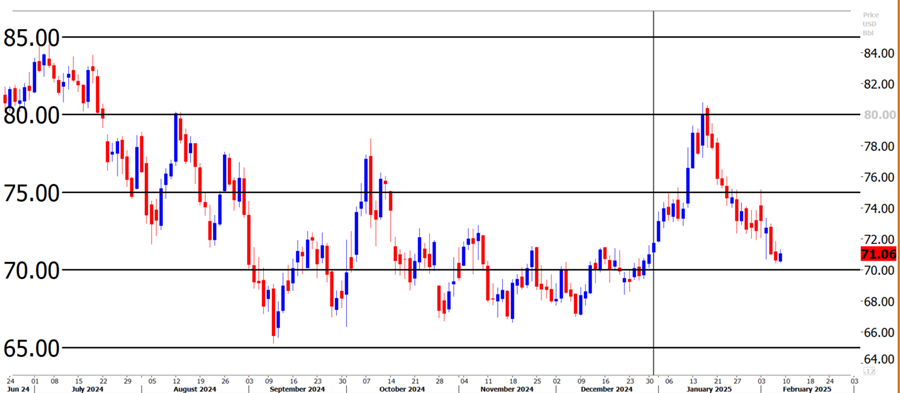Iran sanctions: On Thursday, the U.S. Treasury announced new sanctions on several individuals and tankers involved in transporting millions of barrels of Iranian crude oil annually to China, aiming to increase pressure on Tehran. These are the first U.S. sanctions on Iran’s oil since President Trump vowed earlier this week to reduce Iran’s crude exports to zero to prevent the country from acquiring a nuclear weapon. The Treasury stated that the oil was shipped on behalf of Iran’s Armed Forces General Staff and its front company, Sepehr Energy, which was designated by the U.S. in late 2023. The sanctions target individuals and companies in China, India, and the United Arab Emirates.
Red Sea: Yesterday, oil executives advocated for resuming navigation through the Red Sea towards the Suez Canal, following a pause in attacks by Iran-backed Houthi rebels. However, they noted that companies are cautiously monitoring shipping conditions and competitors. A Liberian-flagged oil tanker, which was attacked last year, sailed through the Red Sea this week, according to the Suez Canal on Monday. This marks one of the first voyages since the Houthi rebels announced last month that they would limit attacks on commercial vessels to those linked to Israel until the Gaza ceasefire is fully implemented.
Canada Trans Mountain: Trans Mountain is considering expansion projects that could increase its capacity by 200,000 to 300,000 barrels per day (bpd), according to a company Vice President Jason Balasch. The pipeline, which currently transports up to 890,000 bpd of crude from Alberta to Canada’s Pacific Coast, has been highlighted due to U.S. President Trump’s recent tariff threats on Canadian oil imports, which he paused for 30 days. The pipeline enables Canadian oil producers to access international markets independently of the U.S. network and accounts for 9% of Canada’s total crude exports. Trans Mountain is exploring short-term measures like using a drag-reducing agent and long-term solutions such as adding pumps to boost capacity.
Market Overview: In early morning trade the complex is showing small gains yet looking to finish the week with loses across the board. After a wild start to the week with the possibility of new tariffs to Mexico and Canada, followed by efforts to sanction Iranian oil, and tariffs on China, the news headlines have calmed down the back half of the week. In the coming weeks, we are probably going to continue to see the complex trade sharply on the headlines and then fall back on the fundamentals of the products for direction.
WTI Crude Daily Candlestick Chart

Shown is a WTI crude chart dating back to summer of 2024. A similar chart was shown earlier this week, however its important to watch WTI to see if the complex can challenge the current level of support at $70 a barrel. As seen in the chart, WTI has attempted to turn $70 into a level of resistance several times but continues to find a way to back to a level of support. Sub $70 WTI should indicate as a buying signal for end users to fill tanks and look at spring contracts.

The oil market closed up today on the news from Thursday that the U.S. Treasury announced new sanctions on several individuals and tankers involved in transporting millions of barrels of Iranian crude oil annually to China, aiming to increase pressure on Tehran. These are the first U.S. sanctions on Iran’s oil since President Trump vowed earlier this week to reduce Iran’s crude exports to zero to prevent the country from acquiring a nuclear weapon. The Treasury stated that the oil was shipped on behalf of Iran’s Armed Forces General Staff and its front company, Sepehr Energy, which was designated by the U.S. in late 2023. The sanctions target individuals and companies in China, India, and the United Arab Emirates.

